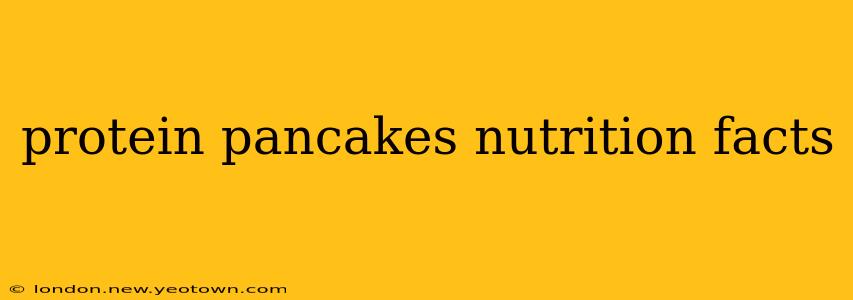Let's be honest, pancakes are a breakfast staple. But traditional pancakes? They're often a sugary, carb-heavy start to the day. Enter protein pancakes: a delicious and nutritious alternative that keeps you full and energized without the guilt. This isn't just about swapping ingredients; it's about understanding how a clever recipe can transform a beloved breakfast into a nutritional powerhouse. My journey into the world of protein pancakes started with a simple question: how can I enjoy my favorite breakfast treat while supporting my fitness goals? The answer, as I discovered, is surprisingly simple and incredibly satisfying.
What are the nutritional benefits of protein pancakes?
The beauty of protein pancakes lies in their ability to offer a balanced nutritional profile. Unlike their traditional counterparts, protein pancakes pack a significant punch of protein, keeping you satiated for longer and supporting muscle growth and repair. They often contain fewer refined carbohydrates and added sugars, leading to a steadier blood sugar level and preventing those mid-morning energy crashes. This balanced approach to nutrition makes protein pancakes a fantastic addition to any healthy eating plan.
How many calories are in protein pancakes?
The calorie count in protein pancakes varies drastically depending on the recipe and ingredients used. A typical serving might range from 200 to 400 calories. This variability stems from the type of protein powder used (whey, casein, soy, etc.), added ingredients like fruits and nuts, and the amount of flour (if any) incorporated. The key is to choose recipes that prioritize whole grains or alternative flours over refined white flour. Always check the nutritional information of your specific recipe to get an accurate calorie count.
Are protein pancakes good for weight loss?
Yes, protein pancakes can be a great addition to a weight loss diet. The high protein content promotes satiety, meaning you'll feel fuller for longer and less likely to overeat. The lower carbohydrate count compared to traditional pancakes contributes to better blood sugar control and reduces cravings. However, portion control remains crucial. Sticking to a reasonable serving size and carefully selecting your ingredients will help you maximize the weight-loss benefits.
What are the best protein powders for protein pancakes?
The world of protein powder is vast! Whey protein is a popular choice because it's easily digestible and mixes well. Casein protein provides a slower release of amino acids, which can be beneficial for overnight muscle recovery. Soy protein is a plant-based option, while brown rice protein and pea protein offer other alternatives. The best protein powder for you depends on your dietary preferences and fitness goals. Experiment to find your favorite!
Are protein pancakes healthier than regular pancakes?
Generally speaking, yes, protein pancakes are considered healthier than traditional pancakes. They typically offer a higher protein content, lower sugar content, and a better balance of macronutrients. However, "healthier" isn't a universal term. The specific ingredients and preparation methods significantly influence the nutritional value. A protein pancake made with excessive added sugar and unhealthy fats wouldn't be considered a healthy option, whereas a carefully crafted recipe with whole grains and natural sweeteners will offer clear nutritional advantages.
Can I make protein pancakes without protein powder?
While protein powder is the cornerstone of many protein pancake recipes, it's not strictly necessary. You can boost the protein content using ingredients like Greek yogurt, cottage cheese, or mashed banana. These alternatives might slightly alter the texture and taste, but they still provide a protein boost and create a healthier pancake option than the traditional kind.
My journey with protein pancakes has been a delicious exploration of healthier eating. It’s about finding the perfect balance between indulgence and nutrition, proving that you can enjoy a beloved breakfast treat while also supporting your health and fitness goals. Remember, understanding the ingredients and adjusting the recipe to your needs is key to unlocking the full potential of these nutritional powerhouses.

